Written by Inga Morozoff
Let’s face it, animals can be hard to photograph. Cats can be aloof, don’t follow commands, and have limited facial expressions. Dogs, on the other hand, can be too rambunctious, shy in front of the camera and don’t follow commands. In all cases, you’re going to have to rely on your creativity and photography knowledge to capture beautiful images of your pet or AARCS foster animal. This introductory article will provide you with a few terrific suggestions to help get you started. Unless noted, all images in this article are by Inga Morozoff Photography.
Get Down to Their Level
Positioning yourself to be at eye level with the animal creates a connection with the viewer that often can’t be achieved when photographing standing up.
Selma (left) was photographed from a standing position. While she’s a cute pup, this awkward angle completely misses the mark. The background is nondescript and there’s nothing in the way of a story being told with this photo. Dexter (right) was photographed from a sitting position. Even though he’s not making direct eye contact with the camera, his eyes are open, nicely lit and are captivating to the viewer. Also, showing the trees in the background gives the image depth and perspective that Selma’s photo lacks.

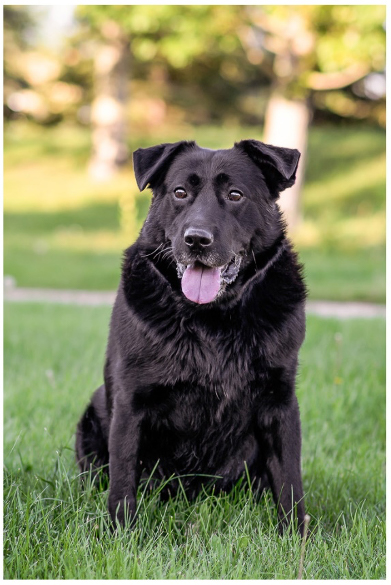
The same holds true when photographing cats. Everest (left) was on a cat stand that was just a bit too tall for the camera. While it’s not a terrible image, it could’ve been improved by standing on a chair or placing him in a different location. In comparison, Berlioz (right) was photographed at eye level which makes a super connection to the viewer.

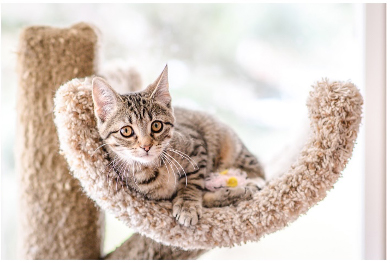
While I strive to photograph at the level of the animal, it’s not always possible. In some cases, I deliberately photograph from below such as Rayna (left), or from above such as with Deacon (right). This photography style requires the use of a wide-angle lens that creates comical angles that exaggerate body features closest to the lens. This technique works well for “long-nosed” dogs but seldom for cats.
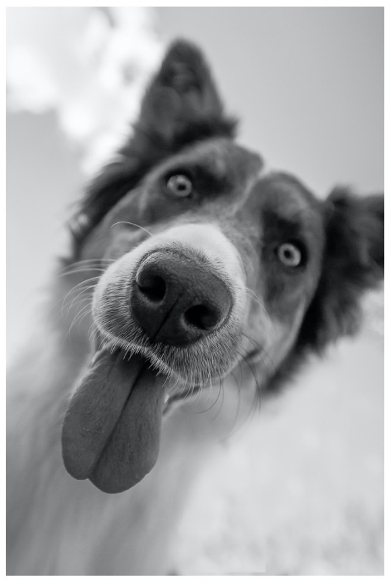
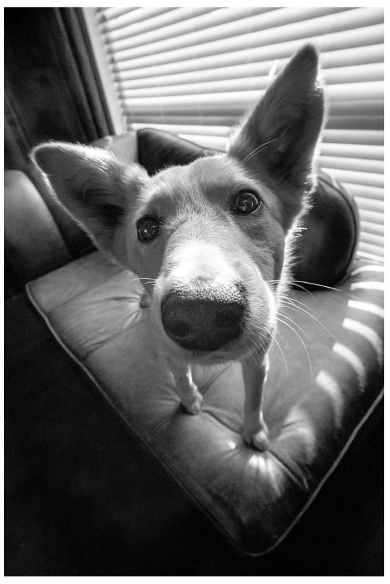
As you’ve seen, your position as the photographer can make a big difference in the final image. In most cases, you should be low enough that the camera is level with the animal’s eyes. Don’t be shy to get dirty and lie on the ground, or grab a chair to give yourself some extra height.
Watch Your Focus
The viewer’s eye is drawn to the area of the image in focus, sharp and clear. With pet photography, that’s typically the eyes but can you can certainly isolate other parts of the body. For example, Arnold’s (left) image is focused on his paws, leaving the viewer wondering why he’s resting his head. Perhaps he’s tired or not feeling well. The focus on Bobbie’s (right) photo is on her open mouth. In this case, the impact of her goofy expression would be lost if the focus was on her eyes.
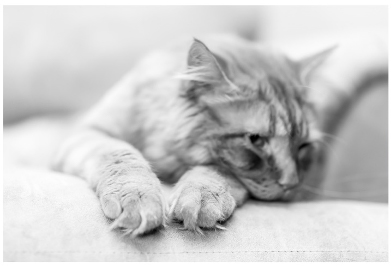
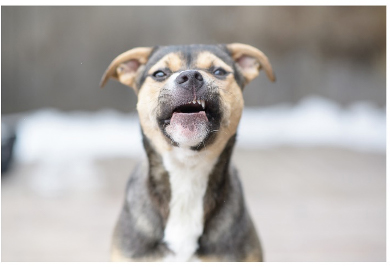
When photographing your pet or AARCS foster, get creative and look for unique areas to focus on. As shown, it doesn’t always need to be the eyes.
Get Their Attention
It can be difficult to get an animal’s attention, especially when they are shy, stressed or distracted. Using treats and toys can be especially helpful to promote positive energy and even relaxation. Cats, and kittens like Hayward (left), can’t resist swatting at wand toys which allows you to capture fun shots that show personality. While toys do work for dogs, they are often chewed up, frayed or dirty, which can negatively impact a shot’s quality. Treats, on the other hand, can be tossed which keeps their heads up and creates super fun images such as the one of Maggie (right) and her flaps.


Getting attention can also include using squeaky toys, catnip or simply clapping your hands. Be creative with other noises such as kissy sounds or simply tapping a surface. Whatever you choose to use, be mindful of how the animal reacts and change your plan accordingly if they become bored or stressed.
Use Props
Props are a terrific way to show off an animal’s personality, add interest to an otherwise boring setting, distract from unappealing surroundings, or promote certain features. Cats don’t often tolerate being dressed up with accessories, so try using boxes, paper bags and stuffed animals. Calm, relaxed dogs can be fun to dress up in bow ties, necklaces, flower crowns and bandanas, and stuffed animals work well with young puppies. For example, Weenie (left) hopped in that box on her own so it was the perfect prop to use for her photo. Putting a necklace and flower on Mouse (right) elevated her photo with over-the-top cuteness.


Props can add an interesting dynamic to the image and can often turn a boring photo into something you can be proud of.
Take Advantage of Surroundings
A simple method to add interest and variety to pet photos is to use what’s already in the environment. Rather than using the same carpeted cat tree, use another surface such as stairs and furniture. Rennie (left) hopped onto the kitchen island countertop which provided a great shot before being scooted off. When photographing outdoors, the possibilities are endless; trees, sticks, flowers, pine cones, park furniture such as benches and boulders are all terrific elements to use in a photo. Sessi (right) discovered the joy of a simple stick during her photoshoot.
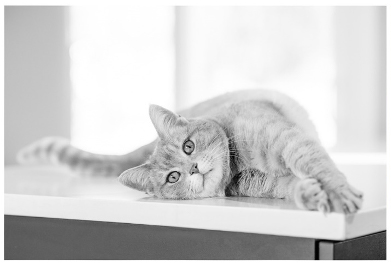

Being creative and looking around your environment for interesting surfaces and objects is a fun way to engage with your pet or foster for their photo. This segues nicely into the last tip which is to tidy up the space before you take the photo.
Tidy Up the Space
A photo that shows surrounding clutter takes away from the primary subject which is your adorable pet or AARCS foster. Look through the viewfinder, what do you see? An open box with last night’s pizza on the kitchen table? A bright red jacket hanging on the back of a chair? Tattered and torn carpet on the cat tree? Used puppy pads on the floor or piles of dog poop in the yard? Taking a quick moment to tidy up and declutter the space will improve your photos. Viewers’ attention will be drawn to the animal rather than distractions in the background.
Thank you for reading and have fun photographing your pet or AARCS foster!

Inga Morozoff
Inga Morozoff Photography & AARCS Photographer
Got ideas for our next blog? Email [email protected]!
